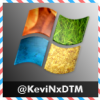-
Posts
24 -
Joined
-
Last visited
-
Days Won
2
Reputation Activity
-
 Makcalable got a reaction from Asifmute in How To Integrate/Slipstream 'SP3' Into MS Office 2007
Makcalable got a reaction from Asifmute in How To Integrate/Slipstream 'SP3' Into MS Office 2007
How To Integrate SP3 Into MS Office 2007
Here is a quick guide on how to Integrate or Slipstream MS Office SP3 2007 into the installation CD/DVD.
Right now 'Create A New Folder' to anywhere of your choice, I named mine 'Office 2007';
Now I created my new folder on my G:\ Drive
Ok to be able to Integrate or Slipstream MS Office SP3 2007 into the installation CD/DVD first thing you will need to do is Download the "office2007sp3-kb2526086-fullfile-en-us.exe" file.
Click on the link here to Download MS Office 2007 SP3 - http://www.microsoft.com/download/en/details.aspx?id=27838
(Now Download this to the same location as your as your new folder you just created.) As in the image above. (Ignore the MS Office 2007 Enterprise SP3 as this was my test run)
Ok now you will need to 'Copy the Contents of your MS Office 2007 CD/DVD' to the new folder "Office2007"
Ok now all you will need to do is open Command Prompt as Admin and Enter the following command >
G:\office2007sp3-kb2526086-fullfile-en-us.exe /extract:G:\Office2007\Updates\
Remember, where I have G:\ your's maybe different, so Replace G with whatever drive letter you used.
Once you have Entered the Command, Press Enter.........
You will see a new Window pop up 'Microsoft Software License Terms' for 2007 Microsoft Office Suite Service Pack 3 (SP3)
Here you just need to accept and Click on Continue to proceed......
Now the files are being extracted from the SP3 file you downloaded and placed into the updates folder of the Microsoft Office Installation Files you copied from your CD/DVD
The reason we have had to Integrate or Slipstream the SP3 file this way is because the update needs to be in the .msp file format to be able to install from the updates folder from your Microsoft Office 2007 Installation CD/DVD
Ok in a matter of seconds, it is all done!
Click ok......
Now burn your new Microsoft Office 2007 SP3 Installation back to a CD/DVD.
Tried and tested on MS Office 2007 Enterprise and Professional.
-
 Makcalable got a reaction from Kevin Acuña Meneses in Bootable AntiVirus Rescue CDs (Free Download)
Makcalable got a reaction from Kevin Acuña Meneses in Bootable AntiVirus Rescue CDs (Free Download)
A safe way to remove viruses from a computer without the risk of getting infected
All the rescue CDs listed here can scan and clean both FAT and NTFS drives.
Kaspersky Rescue Disk
See Here For More Info And Download Kaspersky Rescue Disk
AVG Rescue CD
See Here For More Info And Download AVG Rescue CD
Improved Avira AntiVir Rescue System
See Here For More Info And Download Avira AntiVir Rescue System
Bootable Antivirus Rescue CD from BitDefender
See Here For More Info And Download Bootable Antivirus Rescue CD from BitDefender
Trinity Rescue Kit | CPR for your computer
See Here For More Info And Download Trinity Rescue Kit
F-Secure Rescue CD
See Here For More Info And Download F-Secure Rescue CD
Panda SafeCD
See Here For More Info And Download Panda SafeCD
All Information and Downloads are directed straight at Sources.
-
 Makcalable got a reaction from NIM in How To Install Windows 7 Or Windows Vista Via USB
Makcalable got a reaction from NIM in How To Install Windows 7 Or Windows Vista Via USB
How To Install Windows 7 Or Wondows Vista Via USB;
USB Flash Drive (Minimum 4GB)
Windows 7 or Vista
Follow the simple steps below to create bootable Windows 7/Vista USB drive using which you can install Windows 7/Vista easily.
1. Plug-in your USB flash drive to USB port and move all the contents from USB drive to a safe location on your system.
2. Open Command Prompt as administrator.
3. Type in the following commands in the command prompt:
Type DISKPART and hit enter to see the below message.
Next type LIST DISK command and note down the Disk number of your USB flash drive.
4. So below are the commands you need to type and execute one by one:
SELECT DISK 3
CLEAN
CREATE PARTITION PRIMARY
SELECT PARTITION 1
ACTIVE
FORMAT FS=NTFS
(The Format Process Should Only Take Few Minutes)
ASSIGN
EXIT
Do not close the command prompt as you will need to execute one more command at the next step so Just minimize it for now.
5. Now insert your Windows7 or Vista DVD into the your drive and check the drive letter of the DVD drive. Lets assume that your DVD drive letter is "E" and your USB drive letter is "I"
6. Maximize the minimized Command Prompt and type in the following command now:
E: CD BOOT and hit enter. Where "E" is your DVD drive letter.
CD BOOT and hit enter to see the below message.
7. Type another command given below to update the USB drive with BOOTMGR compatible code.
BOOTSECT.EXE /NT60 I:
Where "I" is your USB drive letter.
8. Copy your Windows 7/Vista DVD contents to the USB flash drive.
9. The only thing you need to change now is the boot priority in the BIOS to USB from the HDD or CD ROM drive.
Thats it now complete, now you can install your windows 7 or Vista from your USB!
Enjoy!
-
 Makcalable got a reaction from NIM in Rebuiding Icon Cache For Windows Vista & 7
Makcalable got a reaction from NIM in Rebuiding Icon Cache For Windows Vista & 7
Rebuiding Icon Cache For Windows Vista & 7
Ok, if you are having problems with an icon that is blank or looking kinda odd for program you have installed on you pc, try uninstalling the offending program and then re install it, this will fix the issue normally.
However, sometimes it isn't that easy when a lot or all icons are blank. This is due to the icon cache being corrupted which can be caused by a number of things.
This will help guide you on how to correct your issue regarding blank icons by Deleting & rebuilding the icon cache;
Ok, to be able to rebuild the icon cache you will need to locate and delete the file which will be hidden by default.
(step 1) Firstly open Computer by going to > Start > Computer Is Located On Right Side of Menu;
(step 2) In the new Window Click Tools from the Menu > Select Folder Option;
(step 3) Now click the View tab > Select Show Hidden Files Folders and Drives and click Apply;
(step 4) Now go to computer as you did in step 1 then type in the address bar > %username%\AppData\Local and press Enter:
Now locate the Icon Cache File and simply delete it;
Now all you need to do now is restart your PC and this will automatically rebuild the Icon Cache to its normal self.
Thats it done, all your icons should be displayed as normal.
Hope you found this useful!
-
 Makcalable got a reaction from NIM in Identify & Resolve Issues In Windows
Makcalable got a reaction from NIM in Identify & Resolve Issues In Windows
If you are finding you have some issues in Windows like slow startUp/slow shut down/error's/generally running slow/driver's not working correctly/corrupt files/ etc.... then take a look at the brief list of things below to try and resolve any issues;
This is just a brief discription of how to run these tools that are built into the windows system.
Event Viewer = Start >Type in Search Box > eventvwr.msc Hit enter
This will show you the Event Viewer log, you can view the scan results of Check Disk scan and in Windows 7 and Vista and also show applications & services logs too.
Performance Report = Start >Type in Search Box > perfmon /report Hit enter
This report will include a whole load of things about how your system is running and show any issues, here are just a few of them:
Diagnostic Results Warnings, Performance, Software Configuration, OS Checks, Security Center Information, System Services, Startup Programs
Disk, Hot files, Disk breakdown, Physical disk, NTFS Performance, CPU, Process, Service, Services, System, Hardware Configuration, Disk Checks, Systems, Desktop Rating, BIOS, Devices
Memory, Processes, Counters,Network
Device Manager = Start >Type in Search Box > devmgmt.msc Hit enter
If you are experiencing driver issues of some sort and/or not working properly you can go to the Device Manager to look for any discrepancies by looking for Yellow Exclamation marks next to the driver info.
System File Checker = Open Command Prompt As Administrator & Type sfc /scannow Hit enter
The System File Checker will look for any system files/.dll file's that are corrupt and will attempt to fix these normally following a re start of your computer.
This can also be run in safemode too by selecting Safemode with command prompt privilage.
Microsoft System Configuration Utility = Start > Type in Search Box > msconfig Hit enter
msconfig allows you to disable some of the unnecessary programs that automatically load on startup, disabling these programs will help your computer boot faster and crash less and help in identifying any issues.
Windows Memory Diagnostics = Start > Type in Search Box > memory Hit enter
The windows memory diagnostics includes a set of memory tests so if you are experiencing problems while running Windows you can use the diagnostic to determine whether the problems are caused by failing hardware, such as Ram or evn the memory system of your motherboard.
Check Disk = Start > Type in Search Box > chkdsk Hit enter
Chkdsk analyzes the physical structure of a disk to make sure that it is healthy and It can repair problems related to bad sectors, lost clusters, and directory errors.
These types of problems can be caused in many different ways ie. System crashes or freezes, power glitches, incorrectly turning off a computer can also cause corruption in the system files etc..
Hope You Found This Useful!
-





